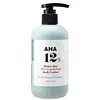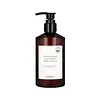What's inside
What's inside
 Key Ingredients
Key Ingredients

 Benefits
Benefits

 Concerns
Concerns

 Ingredients Side-by-side
Ingredients Side-by-side

Water
Skin ConditioningGlycolic Acid
BufferingGlycerin
HumectantCanola Oil
Emollient1,2-Hexanediol
Skin ConditioningCetearyl Alcohol
EmollientPetrolatum
EmollientPropylene Glycol
HumectantPEG-40 Stearate
EmulsifyingCyclopentasiloxane
EmollientGlyceryl Stearate
EmollientSorbitan Sesquioleate
EmulsifyingPEG-100 Stearate
Cyclohexasiloxane
EmollientSodium Hydroxide
BufferingCetearyl Olivate
Hydroxyethyl Acrylate/Sodium Acryloyldimethyl Taurate Copolymer
Emulsion StabilisingDimethicone
EmollientSorbitan Olivate
EmulsifyingSqualane
EmollientCocos Nucifera Oil
MaskingEthylhexylglycerin
Skin ConditioningPolysorbate 60
EmulsifyingXanthan Gum
EmulsifyingDipropylene Glycol
HumectantSorbitan Isostearate
EmulsifyingButylene Glycol
HumectantHydrogenated Lecithin
EmulsifyingCentella Asiatica Extract
CleansingCeramide NP
Skin ConditioningTocopheryl Acetate
AntioxidantPentylene Glycol
Skin ConditioningHarpagophytum Procumbens Root Extract
Skin ConditioningPolygonum Cuspidatum Root Extract
AntioxidantScutellaria Baicalensis Root Extract
AstringentCamellia Sinensis Leaf Extract
AntimicrobialMadecassoside
AntioxidantSodium Hyaluronate
HumectantGlycyrrhiza Glabra Root Extract
BleachingAloe Barbadensis Leaf Juice
Skin ConditioningRosmarinus Officinalis Leaf Extract
AntimicrobialChamomilla Recutita Flower Extract
MaskingHydrolyzed Collagen
EmollientSoluble Collagen
HumectantSodium Acetylated Hyaluronate
HumectantSodium Hyaluronate Crosspolymer
HumectantCollagen Amino Acids
MoisturisingPotassium Hyaluronate
Skin ConditioningHydroxypropyltrimonium Hyaluronate
Hydrolyzed Hyaluronic Acid
HumectantHyaluronic Acid
HumectantDisodium EDTA
Water, Glycolic Acid, Glycerin, Canola Oil, 1,2-Hexanediol, Cetearyl Alcohol, Petrolatum, Propylene Glycol, PEG-40 Stearate, Cyclopentasiloxane, Glyceryl Stearate, Sorbitan Sesquioleate, PEG-100 Stearate, Cyclohexasiloxane, Sodium Hydroxide, Cetearyl Olivate, Hydroxyethyl Acrylate/Sodium Acryloyldimethyl Taurate Copolymer, Dimethicone, Sorbitan Olivate, Squalane, Cocos Nucifera Oil, Ethylhexylglycerin, Polysorbate 60, Xanthan Gum, Dipropylene Glycol, Sorbitan Isostearate, Butylene Glycol, Hydrogenated Lecithin, Centella Asiatica Extract, Ceramide NP, Tocopheryl Acetate, Pentylene Glycol, Harpagophytum Procumbens Root Extract, Polygonum Cuspidatum Root Extract, Scutellaria Baicalensis Root Extract, Camellia Sinensis Leaf Extract, Madecassoside, Sodium Hyaluronate, Glycyrrhiza Glabra Root Extract, Aloe Barbadensis Leaf Juice, Rosmarinus Officinalis Leaf Extract, Chamomilla Recutita Flower Extract, Hydrolyzed Collagen, Soluble Collagen, Sodium Acetylated Hyaluronate, Sodium Hyaluronate Crosspolymer, Collagen Amino Acids, Potassium Hyaluronate, Hydroxypropyltrimonium Hyaluronate, Hydrolyzed Hyaluronic Acid, Hyaluronic Acid, Disodium EDTA
Water
Skin ConditioningNiacinamide
SmoothingCetyl Ethylhexanoate
Emollient1,2-Hexanediol
Skin ConditioningMethylpropanediol
SolventCaprylic/Capric Triglyceride
MaskingGlycerin
HumectantCetearyl Olivate
Sorbitan Olivate
EmulsifyingXanthan Gum
EmulsifyingSorbitan Stearate
EmulsifyingPolysorbate 60
EmulsifyingCarbomer
Emulsion StabilisingTriethanolamine
BufferingEthylhexylglycerin
Skin ConditioningSodium Acrylate/Sodium Acryloyldimethyl Taurate Copolymer
Emulsion StabilisingIsohexadecane
EmollientDisodium EDTA
Polysorbate 80
EmulsifyingSodium Hyaluronate
Humectant3-O-Ethyl Ascorbic Acid
Skin ConditioningLactic Acid
BufferingWater, Niacinamide, Cetyl Ethylhexanoate, 1,2-Hexanediol, Methylpropanediol, Caprylic/Capric Triglyceride, Glycerin, Cetearyl Olivate, Sorbitan Olivate, Xanthan Gum, Sorbitan Stearate, Polysorbate 60, Carbomer, Triethanolamine, Ethylhexylglycerin, Sodium Acrylate/Sodium Acryloyldimethyl Taurate Copolymer, Isohexadecane, Disodium EDTA, Polysorbate 80, Sodium Hyaluronate, 3-O-Ethyl Ascorbic Acid, Lactic Acid
 Reviews
Reviews

Ingredients Explained
These ingredients are found in both products.
Ingredients higher up in an ingredient list are typically present in a larger amount.
1,2-Hexanediol is a synthetic liquid and another multi-functional powerhouse.
It is a:
- Humectant, drawing moisture into the skin
- Emollient, helping to soften skin
- Solvent, dispersing and stabilizing formulas
- Preservative booster, enhancing the antimicrobial activity of other preservatives
Cetearyl Olivate is an emulsifier and texture enhancer. It is derived from the fatty acids of olive oil and Cetearyl alcohol, and is biodegradable.
As an emulsifier, it is used to prevent oils and waters from separating. It can also
Manufacturers use the name Olivem 1000. This ingredient has been found to preserve the natural microbiome of skin. Having a healthy microbiome helps keep our skin healthy and protects against harmful bacteria. This ingredient is grouped with Sorbitan Olivate under the name Olivem 1000.
Learn more about Cetearyl OlivateDisodium EDTA plays a role in making products more stable by aiding other preservatives.
It is a chelating agent, meaning it neutralizes metal ions that may be found in a product.
Disodium EDTA is a salt of edetic acid and is found to be safe in cosmetic ingredients.
Learn more about Disodium EDTAEthylhexylglycerin (we can't pronounce this either) is commonly used as a preservative and skin softener. It is derived from glyceryl.
You might see Ethylhexylglycerin often paired with other preservatives such as phenoxyethanol. Ethylhexylglycerin has been found to increase the effectiveness of these other preservatives.
Glycerin is already naturally found in your skin. It helps moisturize and protect your skin.
A study from 2016 found glycerin to be more effective as a humectant than AHAs and hyaluronic acid.
As a humectant, it helps the skin stay hydrated by pulling moisture to your skin. The low molecular weight of glycerin allows it to pull moisture into the deeper layers of your skin.
Hydrated skin improves your skin barrier; Your skin barrier helps protect against irritants and bacteria.
Glycerin has also been found to have antimicrobial and antiviral properties. Due to these properties, glycerin is often used in wound and burn treatments.
In cosmetics, glycerin is usually derived from plants such as soybean or palm. However, it can also be sourced from animals, such as tallow or animal fat.
This ingredient is organic, colorless, odorless, and non-toxic.
Glycerin is the name for this ingredient in American English. British English uses Glycerol/Glycerine.
Learn more about GlycerinPolysorbate 60 is used to help stabilize products. It is a surfactant and emulsifier. These properties help keep ingredients together in a product. Surfactants help reduce surface tension between ingredients with different states, such as liquids and solids. Emulsifiers help prevent oils and waters from separating.
Polysorbate 60 is sorbitol-based and created from the ethoxylation of sorbitan. Ethoxylation is a chemical reaction used to add ethylene oxide. Sorbitan is a the dehydrated version of sorbitol, a sugar found in fruits.
In this case, the 60 comes from reacting 60 units of ethylene oxide with sorbitan.
Polysorbates are commonly used in medicine and foods.
Learn more about Polysorbate 60Sodium Hyaluronate is hyaluronic acid's salt form. It is commonly derived from the sodium salt of hyaluronic acid.
Like hyaluronic acid, it is great at holding water and acts as a humectant. This makes it a great skin hydrating ingredient.
Sodium Hyaluronate is naturally occurring in our bodies and is mostly found in eye fluid and joints.
These are some other common types of Hyaluronic Acid:
Learn more about Sodium HyaluronateSorbitan Olivate is created from the fatty acids in olive oil and sorbitol.
This ingredient is an oil in water emulsifier. It helps stabilize a product by preventing oils and waters from separating. Sorbitan Olivate also helps hydrate the skin.
Manufacturers sell sorbitan olivate under the name OliveM 1000. OliveM 1000 a multifunctional ingredient. It is self-emulsifying. According to a manufacturer, OliveM 1000 does not disrupt natural skin biome.
Due to its olive oil base, this ingredient may not be fungal-acne safe.
Learn more about Sorbitan OlivateWater. It's the most common cosmetic ingredient of all. You'll usually see it at the top of ingredient lists, meaning that it makes up the largest part of the product.
So why is it so popular? Water most often acts as a solvent - this means that it helps dissolve other ingredients into the formulation.
You'll also recognize water as that liquid we all need to stay alive. If you see this, drink a glass of water. Stay hydrated!
Learn more about WaterXanthan gum is used as a stabilizer and thickener within cosmetic products. It helps give products a sticky, thick feeling - preventing them from being too runny.
On the technical side of things, xanthan gum is a polysaccharide - a combination consisting of multiple sugar molecules bonded together.
Xanthan gum is a pretty common and great ingredient. It is a natural, non-toxic, non-irritating ingredient that is also commonly used in food products.
Learn more about Xanthan Gum